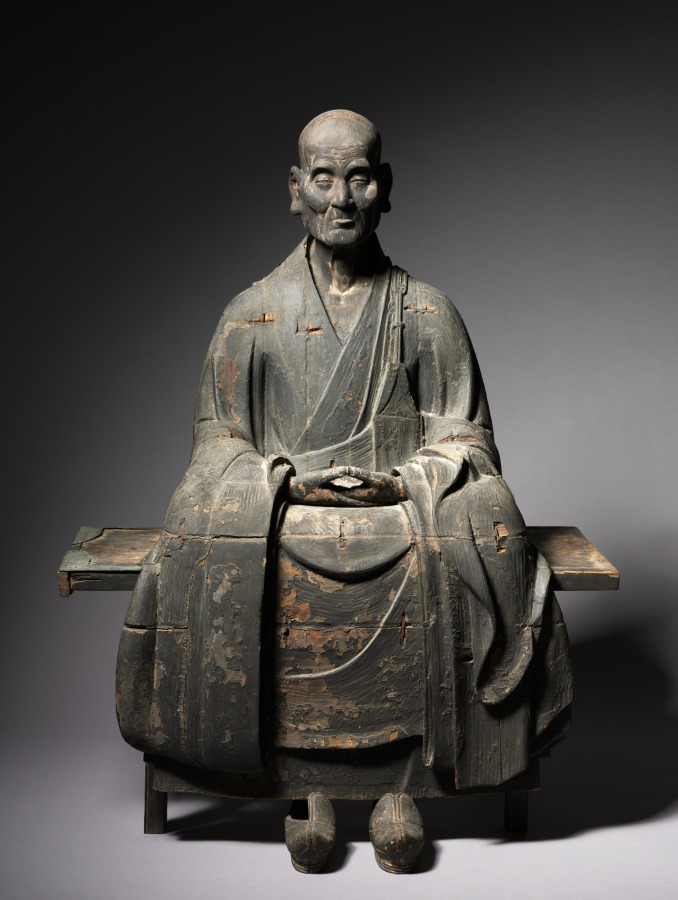| schema:description 11 | "digital_description: Hottō Enmyō Kokushi, is a posthumous title bestowed upon the Zen Buddhist monk Shinchi Kakushin (1203–1298) by the emperor Go-Daigo. The title means “perfectly awakened national teacher of the Dharma lamp.” Considered a fine example of “Kamakura realism,” while downplaying detail in the body, the sculpture emphasizes fidelity in representing the visage of Kakushin....(more)" |
| schema:description | "id: 145412" |
| schema:description | "creditline: Leonard C. Hanna, Jr. Fund" |
| schema:description | "type: Sculpture" |
| schema:description | "culture: Japan, Kamakura Period (1185-1333)" |
| schema:description | "current_location: 235B Japanese" |
| schema:description | "measurements: Overall: 91.4 cm (36 in.)" |
| schema:description | "tombstone: Portrait of Hottō Enmyō Kokushi, 1286–1333. Japan, Kamakura Period (1185-1333). Hinoki cypress wood with lacquer; overall: 91.4 cm (36 in.). The Cleveland Museum of Art, Leonard C. Hanna, Jr. Fund 1970.67...(more)" |
| schema:description | "wall_description: Hottō Enmyō Kokushi, is a posthumous title bestowed upon the Zen Buddhist monk Shinchi Kakushin (1203–1298) by the emperor Go-Daigo. The title means “perfectly awakened national teacher of the Dharma lamp.” Compared with two sculptures of the monk created during his lifetime (both in and around 1275), this sculpture portrays Kakushin as a much older man. It comprises multiple wood blocks, with the main parts being the front, back, and the head, which is inserted into the body. Although only the lacquer remains today, the sculpture would once have been painted. Considered a fine example of “Kamakura realism,” while downplaying detail in the body, the sculpture emphasizes fidelity in representing the visage of Kakushin....(more)" |
| schema:description | "collection: Japanese Art" |
| schema:description | "technique: Hinoki cypress wood with lacquer" |

